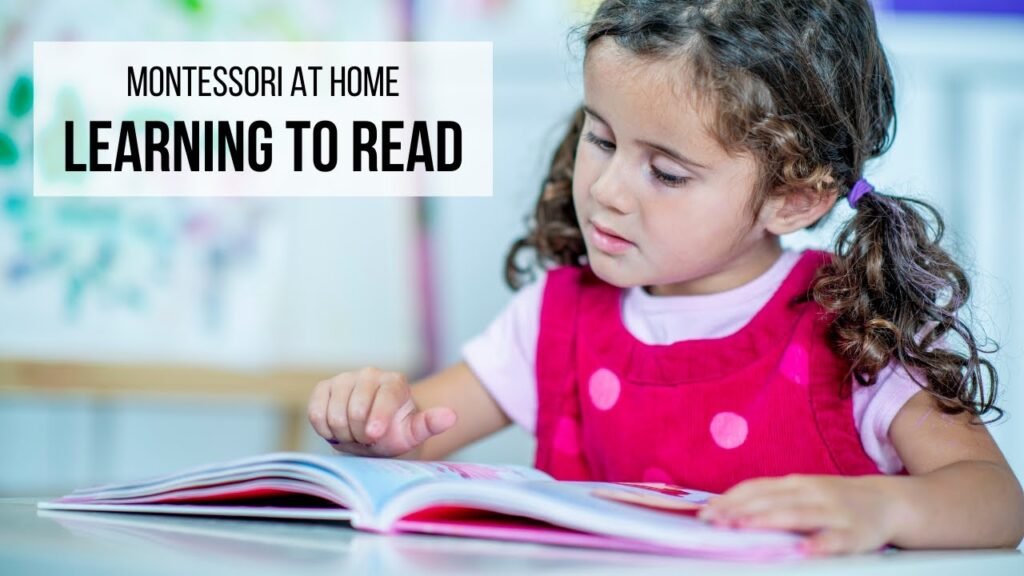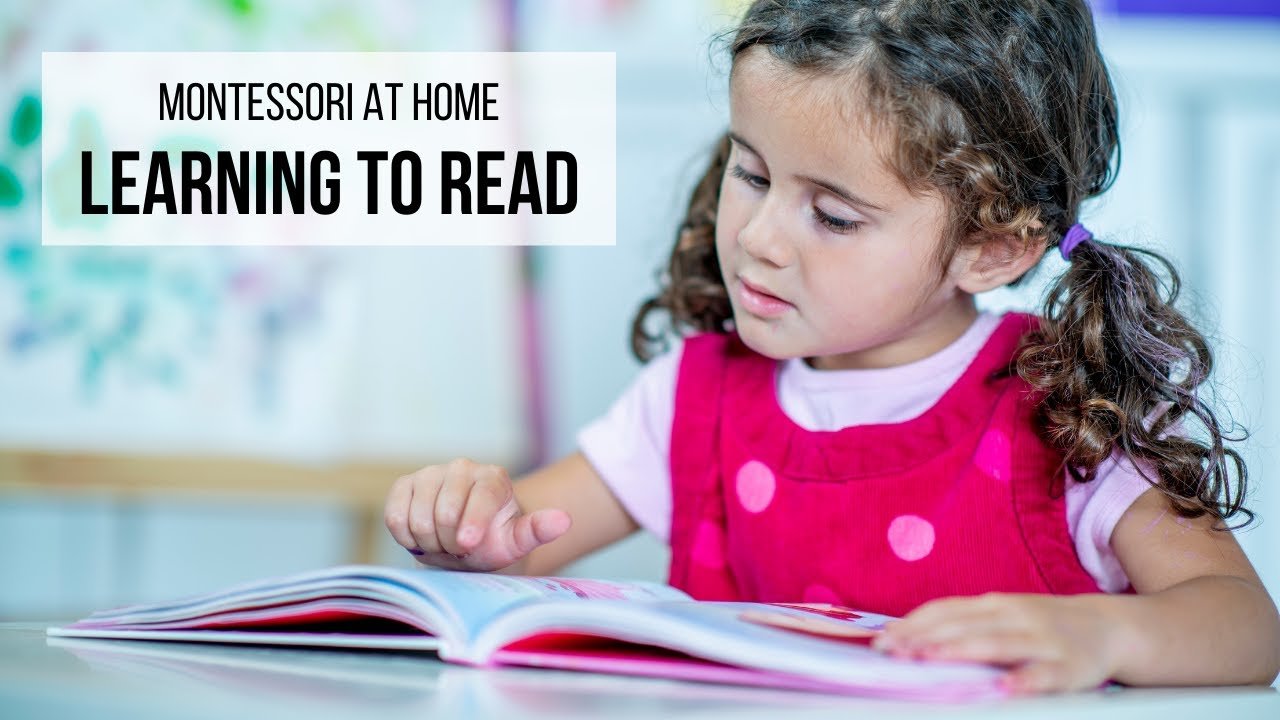You’re in for a treat with the video “Learning to Read with Montessori at Home” by Hapa Family. This video will guide you on how to assist your child on their reading journey from birth to the early preschool years. The Montessori approach focuses on fostering a love for reading rather than memorization, making it a joyful experience for your little one. From the Pink, Green, Blue series to the Orton Gillingham approach, you’ll discover various methods to support your child’s reading development.
As a parent, you play a significant role in enriching your child’s vocabulary and language skills from birth. By engaging in direct one-on-one conversations, singing, and using the correct names for everything, you are laying a strong foundation for your child’s language development. Encouraging rich vocabulary, reciting poems, and reading to your child daily are simple yet effective ways to help them learn and eventually master the skills needed to read independently. Trust in the Montessori approach and enjoy the journey of watching your child discover the wonders of reading.

Introduction
Reading is a fundamental skill that opens doors to knowledge, imagination, and communication. When it comes to teaching a child how to read, the Montessori approach emphasizes the importance of joy in the learning process. Rather than focusing on rote memorization, Montessori method encourages children to discover and explore the world of reading on their own terms. In this comprehensive guide, we will walk you through the Montessori approach to learning to read, the various materials and methods used, the benefits of implementing Montessori at home, how to prepare a Montessori reading space, and practical tips for teaching reading using the Montessori Method.
Understanding Montessori Reading Materials
In the Montessori approach to reading, there are distinct series of materials that are used to guide children through their reading journey. The Pink, Green, and Blue series are color-coded sets of materials that gradually introduce children to phonetic sounds, word building, and sentence structure. These materials are designed to be progressive, allowing children to build upon their knowledge and skills as they advance through each series. Additionally, the Orton Gillingham approach is another method used within Montessori education to support children with dyslexia and other reading difficulties by focusing on multisensory techniques to help them learn to read.
Benefits of Montessori at Home
Implementing Montessori principles at home can have numerous benefits when it comes to teaching your child how to read. One of the key advantages of Montessori at home is that it encourages independence in learning. Children are given the freedom to explore reading materials at their own pace, fostering a sense of autonomy and self-motivation. Furthermore, the Montessori approach emphasizes hands-on and sensory experiences, allowing children to engage with reading through tactile and interactive activities, which can enhance their understanding and retention of reading concepts.
Preparing Your Montessori Reading Space
Creating a print-rich environment is essential for promoting literacy in a Montessori home. Surrounding your child with written words, labels, and books can help to cultivate a love of reading and language. Organizing reading materials and resources in a systematic and accessible manner can also aid in fostering a sense of order and structure in your child’s learning environment. By designing a dedicated reading space that is inviting and engaging, you can establish a positive foundation for your child’s reading journey.
Teaching Reading with the Montessori Method
The Muriel Dwyer approach is a specific method within Montessori education that offers a structured and systematic approach to teaching reading. By following the steps outlined in the approach, parents can effectively guide their children through the various stages of learning to read. One of the key techniques used in the Montessori Method is the 3-period lesson, which involves introducing new concepts, reinforcing understanding, and assessing mastery. By incorporating these strategies into your reading lessons, you can create a supportive and enriching learning experience for your child.
Supplementing Montessori Reading with Other Activities
In addition to formal reading instruction, integrating storytelling and discussions into your daily routine can enhance your child’s language development and literacy skills. Sharing stories, asking open-ended questions, and encouraging dialogue can help to deepen your child’s comprehension and critical thinking abilities. Language games and activities can also provide a fun and engaging way to reinforce reading concepts and vocabulary while promoting collaboration and social interaction.
Resources for Montessori Reading at Home
Finding the right resources to support your child’s reading journey is crucial. Recommended books for parents that offer guidance on teaching reading with the Montessori Method can provide valuable insights and strategies. Online resources and materials, such as interactive reading games, printable worksheets, and educational videos, can supplement your teaching efforts and provide additional learning opportunities for your child. By exploring a variety of resources, you can tailor your approach to meet your child’s unique learning needs and interests.
Tracking Progress and Adjusting Teaching Strategies
Observing and assessing your child’s reading skills is an important aspect of teaching reading with the Montessori Method. By monitoring their progress, you can identify areas of strength and areas that may require additional support. Making changes to your teaching strategies based on your child’s individual needs and preferences can help to optimize their learning experience and ensure that they are progressing at a pace that is suitable for them. Flexibility and adaptability are key when it comes to supporting your child’s reading development.
Connecting with Other Montessori Homeschooling Families
Joining online communities and forums dedicated to Montessori homeschooling can provide a valuable source of support and inspiration. Sharing experiences, exchanging tips, and building relationships with other parents who are also navigating the challenges and joys of teaching reading with the Montessori Method can offer a sense of camaraderie and encouragement. By connecting with like-minded families, you can create a network of resources and ideas that can enhance your homeschooling journey and foster a sense of community.
Conclusion
Teaching reading with the Montessori Method offers a holistic and child-centered approach that prioritizes joy, exploration, and independence. By creating a print-rich environment, using hands-on materials, and incorporating sensory experiences, you can cultivate a love of reading in your child that will last a lifetime. Embrace the process of learning to read with your child, celebrate their achievements, and nurture their curiosity and creativity along the way. Enjoy this magical journey of literacy and language with your little one, and cherish the moments of discovery and growth that you will share together. Happy reading!

